
전위. 슈밥. 아이쉐어. SPDR. 이 ETF(Exchange Traded Fund)의 거인들은 모두 그들이 할 수 있는 가장 저렴한 인덱스 펀드를 내놓음으로써 수년 동안 서로를 약탈했습니다. 모두가 소위 "제로 투 제로"에서 서로 경쟁했습니다.
그리고 가장 가능성이 낮은 다크호스에게 모든 것을 잃었습니다.
Upstart SoFi는 최근 연간 비용이 0인 ETF를 출시한 최초의 공급자가 됨으로써 저비용 기업을 뒤흔들었습니다. 그리고 처음 두 개의 ETF를 출시하면서 그렇게 했습니다. (참고로 Fidelity는 2018년 8월에 뮤추얼 펀드 업계 최초로 수수료가 없는 인덱스 펀드를 도입했습니다.)
대형주 SoFi Select 500 ETF(SFY)와 중형 SoFi Next 500 ETF(SFYX)가 4월 11일 목요일에 시장에 합류했습니다. 각 펀드의 상장 비용 비율은 0.19%이지만 SoFi는 최소한 2020년 6월 30일. 그러면 분명히 각각의 카테고리에서 가장 저렴한 ETF가 될 것입니다.
그러나 시장 구석구석에 투자하는 데는 많은 비용이 들지 않습니다. 다른 많은 범주에는 인덱스 펀드가 있으며 완전 무료는 아니지만 매우 비용 효율적으로 만드는 미세한 수수료를 부과합니다.
미국 ETF 세계에서 가장 저렴한 인덱스 펀드 45개를 소개합니다. 모닝스타(Morningstar) 카테고리별로 나열된 이 ETF는 다양한 전략에 걸쳐 주식, 채권 및 기타 자산을 다루고 있습니다.
데이터는 4월 11일 기준입니다. 이 목록은 제공자 데이터와 각 ETF의 최신 안내서에 나열된 순 비용 비율(수수료 면제 포함)에 대한 Morningstar 데이터를 사용하여 작성되었습니다. 이 목록에는 발표되었지만 출시되지 않은 ETF가 포함되어 있지 않으며 아직 발효되지 않은 발표된 수수료 변경 사항이 반영되지 않았습니다. 모든 Morningstar 카테고리가 여기에 표시되는 것은 아닙니다.
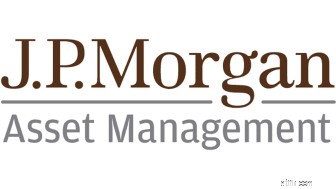
운용 자산이 약 260억 달러에 달하는 ETF 분야의 중견기업인 JPMorgan Chase의 JPMorgan Asset Management 부서는 3월에 JPMorgan BetaBuilders U.S. Equity ETF를 출시하면서 큰 주목을 받았습니다. (BBUS, $52.01) – Vanguard S&P 500 ETF(VOO), iShares Core S&P 500 ETF(IVV) 및 SPDR S&P 500 Trust ETF(SPY)와 같은 거대 기업보다 2bp에 불과한 가장 저렴한 미국 대형 혼합 펀드.
BBUS는 현재 기본적으로 대형주(일반적으로 100억 달러 이상)인 622개 주식의 포트폴리오를 보유하고 있지만 중견기업(일반적으로 20억~100억 달러)에 대한 약 12%의 익스포저와 소수의 소형주( 3억~20억 달러).
상위 보유 종목은 S&P 500 추적기에서 볼 수 있는 것과 유사합니다. Microsoft(MSFT), Apple(AAPL) 및 Amazon(AMZN)을 결합하여 펀드 가중치(그들이 나타내는 포트폴리오의 백분율)의 약 10%를 차지합니다.
참고:Morningstar는 출시 당시 SoFi Next 500 ETF(SFYX)를 대규모 혼합 펀드로 나열했지만 포트폴리오 정보는 나열하지 않았습니다. SFYX는 중형 성장펀드로 재분류될 가능성이 높아 보인다. ETF의 펀드 요약에 따르면 이 펀드는 "500개의 미국 중형 기업으로 구성"되어 있으며 이 지수가 추적하는 지수는 성장 중심입니다. 추가 정보가 제공되면 이에 따라 이 목록을 업데이트하겠습니다.
JPMorgan 제공업체 사이트에서 BBUS에 대해 자세히 알아보십시오.
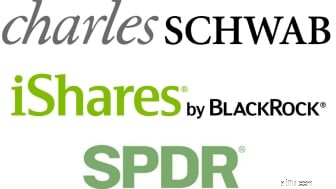
가장 저렴한 미국 소액 펀드라는 타이틀을 놓고 경쟁이 치열합니다. iShares Core S&P 미국 성장 ETF (IUSG, $61.30), Schwab 미국 대형주 성장 ETF (SCHG, $81.29) 및 SPDR 포트폴리오 S&P 500 성장 ETF (SPYG, $37.80) 각각은 4베이시스 포인트만 부과하므로 대규모 성장주에 대한 노출을 제공하는 가장 저렴한 인덱스 펀드가 됩니다.
각 펀드는 수익 성장, 매출 성장 및 가격 모멘텀을 포함할 수 있는 성장 특성을 나타내는 광범위한 대형주를 포괄하는 약간 다른 지수를 추적합니다. iShares 제품은 538개 보유 주식으로 가장 광범위한 포트폴리오를 자랑하며, SCHG는 421개, SPYG는 295개입니다.
참고:Morningstar는 Sofi Select 500 ETF(SFY)를 Morningstar의 대형 성장 펀드로 등록했습니다. SFYX와 마찬가지로 SFY의 Morningstar 포트폴리오 페이지 및 제공자 팩트 시트에는 특정 보유 자산이 나열되어 있지 않습니다. 그러나 펀드 요약 및 팩트 시트 설명을 고려할 때 이 모닝스타 범주에 정착하여 가장 저렴한 대형 성장 ETF로 앞서 언급한 3개 펀드를 대체할 것으로 보입니다. 추가 정보가 제공되면 이에 따라 이 목록을 업데이트하겠습니다.
해당 제공자 사이트에서 이러한 기금에 대해 자세히 알아보십시오. IUSG | SCHG | 스파이그

다시 한 번, iShares, Schwab 및 SPDR은 최고 과금을 놓고 경쟁하고 있습니다.
iShares Core S&P U.S. Value ETF (IUSV, $56.15), Schwab 미국 대형주 ETF (SCHV, $55.70) 및 SPDR 포트폴리오 S&P 500 가치 ETF (SPYV, $31.00)는 이 범주에서 가장 저렴한 ETF로 수백 개의 대형 가치주에 투자하는 데 각각 4bp만 부과됩니다.
대형주 성장 펀드와 유사하게 이 ETF는 각각 약간 다른 지수를 추적합니다. 이번에는 낮은 PER 및 PER과 같은 가치 특성을 나타내는 대형주에 초점을 맞췄습니다. 다시 말하지만, iShares의 오퍼링은 679개로 SCHV의 경우 358개, SPYV의 경우 383개에 비해 단연코 가장 다양한 포트폴리오입니다.
해당 제공자 사이트에서 이러한 기금에 대해 자세히 알아보십시오. IUSV | SCHV | SPYV
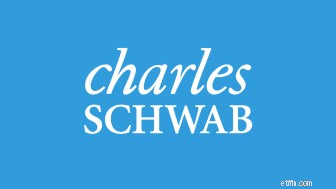
한때 Charles Schwab(SCHW)의 상장지수펀드는 비용이 가장 저렴한 여러 범주를 주도했지만 그 중 일부는 그 이후로 경쟁업체에 필적하거나 축소되었습니다.
그러나 Schwab은 Schwab U.S. Mid-Cap ETF를 통해 중형주를 포함한 몇 가지 범주에서 여전히 선두를 달리고 있습니다. (SCHM, $56.90).
이 인덱스 펀드는 가중 평균 시가 총액이 약 70억 달러인 500개 이상의 중형주를 보유하고 있습니다. 정보 기술, 산업 및 금융이 주도하는 6개 부문이 두 자릿수 가중치를 누리는 훌륭한 부문 다각화를 특징으로 합니다. 단일 주식 위험도 매우 적습니다. Cadence Design Systems(CDNS), Keysight Technologies(KEYS) 및 Veeva Systems(VEEV)와 같은 상위 보유 종목은 각각 펀드 자산의 절반 이상을 차지합니다.
Schwab 제공업체 사이트에서 SCHM에 대해 자세히 알아보십시오.
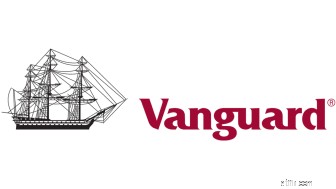
앞서 언급했듯이 SoFi의 새로운 중형 펀드 SFYX는 결국 이 범주에 들어가 자동으로 이 분야에서 가장 비용이 저렴한 ETF가 될 것 같습니다.
그러나 현재로서는 Vanguard Mid-Cap Growth ETF (VOT, $146.07) 중형주 성장을 위한 가장 저렴한 인덱스 펀드입니다.
VOT는 다양한 성장 특성을 나타내는 169개 보유 주식으로 분산되어 있지만 특별히 확장되지는 않는 ETF입니다. 이 펀드는 산업체(25.9%)와 기술(23.3%)의 두 부문에서 최상위 비중을 차지합니다. 현재 가장 많이 보유하고 있는 기업으로는 건축 및 건설 소프트웨어 전문가 Autodesk(ADSK), 의료 장비 회사 Edwards Lifesciences(EW) 및 금융 기술 회사 Fiserv(FISV)가 있습니다.
Vanguard 제공자 사이트에서 VOT에 대해 자세히 알아보세요.

Vanguard는 또한 중형 가치의 왕관을 보유하고 있으며 적어도 현재로서는 SoFi의 위협에 직면하지 않습니다.
재무는 포트폴리오의 거의 1/4에서 가장 큰 비중을 차지합니다. 그리고 "중형주"라는 용어에도 불구하고 ETF의 많은 상위 보유 종목은 전국적으로 알려진 Clorox(CLX) 및 Royal Caribbean Cruises(RCL)와 같은 잘 정립된 이름과 유틸리티 FirstEnergy(FE) 및 East와 같은 대규모 지역 존재입니다. 해안 은행 주식 M&T 은행(MTB).
Vanguard 제공자 사이트에서 VOE에 대해 자세히 알아보세요.

소형주는 높은 상승 잠재력 때문에 성장 투자자들에게 사랑받고 있습니다. 10억 달러보다 100만 달러의 수익을 두 배로 늘리는 것이 훨씬 더 쉬우며, 이러한 성장을 보이면 엄청난 주식 이익을 얻게 될 것이라고 생각합니다.
가장 저렴한 인덱스 펀드 중 최고는 Schwab U.S. Small-Cap ETF 입니다. (SCHA, $71.81), 이것은 더 넓은 소형주 공간을 탐구하는 가장 저렴한 방법입니다. 이 ETF는 가중 평균 시가 총액이 30억 달러 미만인 1,750개 주식을 보유하고 있습니다. 또한 금융(17.9%) 및 정보 기술(15.4%)이 이끄는 5개 부문이 두 자리 수 가중치를 부여하여 적절한 부문 다각화를 제공합니다.
대부분의 보유 종목이 소비자의 눈에 띄지 않지만 수제/빈티지 전자 상거래 전문업체 Etsy Inc.(ETSY) 및 할인 소매업체 Five 아래(FIVE)를 포함하여 상위 보유 종목에 몇 가지 친숙한 이름이 있습니다.
Schwab 제공업체 사이트에서 SCHA에 대해 자세히 알아보세요.

그러나 모든 소형주가 성장 모드에 있는 것은 아닙니다. 일부 회사는 특정 지점 이상으로 확장하기에는 너무 많은 전문 분야를 보유하고 있으며 정체기에 도달했습니다.
가장 성장하는 소형주에만 집중할 수 있는 저렴한 방법을 찾는 사람들은 Vanguard Small-Cap Growth ETF 를 살펴볼 수 있습니다. (VBK, $183.90). VBK가 추적하는 지수는 "미래의 주당순이익(EPS)의 미래 장기 성장, EPS의 미래 단기 성장, EPS의 3년 역사적 성장, 3년 역사적 성장을 포함한 여러 지표를 기반으로 성장주를 분류합니다. 주당 매출, 현재 자산 대비 투자 비율, 자산 수익률."
VBK의 포트폴리오는 산업재(19.6%), 의료(19.5%), 기술(19.0%) 및 금융(17.0%)에 크게 집중된 약 625개 종목입니다. 상위 보유 기업으로는 Burlington Stores(BURL), 생명공학 Sarepta Therapeutics(SRPT) 및 제조 주택 REIT Sun Communities(SUI)가 있습니다.
Vanguard 제공자 사이트에서 VBK에 대해 자세히 알아보십시오.

당신은 실제로 소형주 공간에서 가치를 찾을 수 있습니다.
이 주식은 몇 가지 섹터에 집중되어 있습니다. 금융(34.3%)과 산업(20.4%)이 펀드 자산의 절반 이상을 차지합니다. 한편, 단일 임차인 REIT W. P. Carey(WPC), 유체 시스템 전문업체 Idex Corp.(IDEX) 및 천연 가스 유통업체 Atmos Energy(ATO)가 가장 많이 보유하고 있습니다.
Vanguard 제공업체 사이트에서 VBR에 대해 자세히 알아보세요.
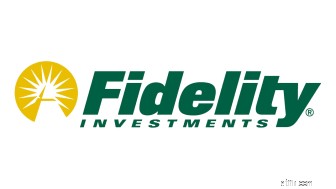
Morningstar에는 11개의 GICS(Global Industry Classification Standard) 부문 각각에 대한 카테고리가 있으며 Fidelity는 그 중 10개 부문에 대해 가장 저렴한 인덱스 펀드를 제공합니다.
이러한 각 펀드에는 각 부문의 회사만 포함하는 주식 바구니가 있습니다. 예를 들어, Fidelity MSCI Financials Index ETF는 JPMorgan Chase(JPM) 및 Bank of America(BAC)와 같은 은행, Berkshire Hathaway(BRK.B) 및 Chubb(CB)와 같은 보험사 및 다음과 같은 투자 관리 회사를 보유하고 있습니다. Goldman Sachs(GS) – 금융 부문 내의 모든 산업.
Fidelity 제공업체 사이트에서 Fidelity의 섹터 ETF에 대해 자세히 알아보십시오.

Schwab US REIT ETF (SCHH, $44.76) 섹터 공간에서 Fidelity의 지배력에 대한 유일한 예외입니다.
SCHH는 부동산 투자 신탁(REITs)에 투자합니다. 이 구조는 사람들이 부동산에 더 쉽게 투자할 수 있도록 1960년에 설립되었습니다. 리츠는 부동산을 소유하고 운영하는 경우가 많으며 과세 소득의 90% 이상을 주주에게 배당금으로 돌려준다는 조건으로 특별 세제 혜택을 누리고 있다. 결과적으로 소득 투자자는 해당 부문에 끌립니다.
Schwab U.S. REIT ETF는 2.8%로 특별히 높은 수익률을 제공하지는 않습니다. 이와 대조적으로 Vanguard REIT ETF는 현재 4.0%의 수익률을 기록하고 있습니다. 그러나 SCHH는 공간을 탐구하는 가장 저렴한 방법이므로 투자자는 쇼핑몰 운영자인 Simon Property Group(SPG), 물류 REIT Prologis(PLD) 및 셀프 스토리지 리더인 PSA(Public Storage)와 같은 회사를 소유할 수 있습니다.
Schwab 제공업체 사이트에서 SCHH에 대해 자세히 알아보십시오.
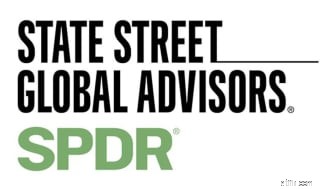
국제 다각화를 추구하는 사람은 해외 주식 시장의 수수료 붕괴로 축복을 받았습니다. 가장 붐비는 지역 중 하나는 수많은 저렴한 인덱스 펀드가 있는 해외 대형 블렌드입니다.
그러나 SPDR 포트폴리오 선진국 전 미국 ETF (SPDW, $29.71)는 2년 전 여러 SPDR ETF에 걸쳐 비용을 대폭 절감한 이니셔티브에 따라 현재 저비용 리더로 군림하고 있습니다. SPWD는 이전에 SPDR S&P World ex-US ETF(GWL)로 알려졌으며 연간 비용은 0.34%입니다. 2017년 10월에 펀드의 이름이 바뀌었고 비용이 저렴한 4bp로 낮아졌습니다.
외국의 대규모 혼합 공간에 있는 많은 펀드는 일본, 호주 및 서유럽 국가와 같은 보다 경제적으로 발전된 국가에 집중적으로 투자되지만 일부는 중국 및 인도와 같은 신흥 시장 국가를 보유합니다. SPDW는 일본(23.0%), 영국(14.6%), 캐나다(8.5%)를 포함한 선진국 시장에 주로 노출되어 있습니다.
SPDR 제공자 사이트에서 SPDW에 대해 자세히 알아보십시오.

일반적으로 펀드 이름에 "world" 또는 "global"이라는 단어가 포함되어 있으면 미국 주식과 해외 주식 모두에 투자한다는 의미이고 "international"은 미국 외 주식에만 투자하는 경향이 있습니다.
Vanguard Total World Stock ETF (VT, $74.68) 따라서 미국 및 기타 국가에 대한 플레이가 가능하며 해당 범주에서 가장 저렴한 지수 ETF입니다.
$10,000 투자할 때마다 단 $9에 Vanguard Total World Stock ETF는 42개국에 걸쳐 8,109개 주식의 방대한 포트폴리오를 제공합니다. 미국 기업은 54.5%의 비중으로 포트폴리오의 절반 이상을 차지합니다. 일본, 영국, 캐나다와 같은 더 큰 선진국이 많은 관심을 받는 반면 VT는 필리핀, 멕시코, 카타르와 같은 소규모 신흥 시장에 약간 노출되어 있습니다.
Vanguard 제공자 사이트에서 VT에 대해 자세히 알아보십시오.

선진 시장 펀드는 일반적으로 저성장 경제에서 보다 가치 지향적인 블루칩을 제공합니다. 그러나 중국, 인도, 브라질, 태국과 같은 신흥 시장은 일반적으로 훨씬 더 빠른 성장률을 자랑하며 신흥 시장에 투자하는 펀드는 더 성장 지향적입니다. 절충안? 이러한 경제와 주식 시장은 훨씬 더 변동성이 있을 수 있습니다.
이러한 위험을 분산시키는 방법은 SPDR Portfolio Emerging Markets ETF와 같은 다양한 지수 ETF에 투자하는 것입니다. (SPEM, $36.48).
SPEM은 약 30개국에서 거의 1,550개의 신흥 시장 주식을 보유하고 있습니다. 중국은 일반적으로 EM 펀드 포트폴리오의 막대한 부분을 차지하며 자산의 거의 3분의 1을 중국 주식에 투자하는 이 ETF의 경우입니다. 대만(13.5%)과 인도(12.9%)도 여기에 상당한 플레이어입니다.
SPDR 제공자 사이트에서 SPEM에 대해 자세히 알아보세요.
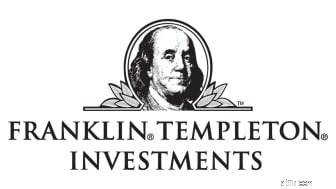
2018년 중국의 GDP 성장률 6.6%는 1990년 이후 가장 느린 속도였습니다. 그러나 분명히 예전처럼 확장되지는 않지만 선진국들은 여전히 그런 수치에 대해 부러워할 충분한 이유가 있습니다. 2018년에 1조 5천억 달러의 세금 감면과 막대한 정부 지출에도 불구하고 미국의 GDP는 2.9% 개선에 그쳤습니다.
중국 ETF는 지난 몇 년 동안 놀랍지 않게 전면에 떠올랐습니다. But despite its dirt-cheap expenses, the Franklin FTSE Hong Kong ETF (FLHK, $27.33) hasn’t quite caught on yet. The ETF made its public debut in November 2017, and has since amassed only $20.4 million in assets and trades just a few thousand shares daily.
That’s likely in large part because FLHK invests in Hong Kong companies. The 92-holding portfolio includes the likes of AIA Group (AAGIY), Link REIT (LKREF) and Hang Seng Bank (HSNGY). But that focus means it excludes high-profile growth plays such as Alibaba (BABA), JD.com (JD) and Ctrip.com International (CTRP), just to name a few.
Learn more about FLHK at the Franklin Templeton provider site.

Bond investors also have benefited from the ETF fee wars.
The Schwab Short-Term U.S. Treasury ETF (SCHO, $50.05) and the SPDR Portfolio Short Term Treasury ETF (SPTS, $29.68) both attempt to track the Bloomberg Barclays U.S. 1-3 Year Treasury Bond Index.
When interest rates rise, the prices on existing bonds tend to fall as investors sell to buy into the better-rate bonds. But the shorter the length of the bond, the less such risk there is. Hence, short-term bonds are considered “safer.” Combine that factor with the fact that U.S. Treasuries are among the best-rated bonds as far as credit quality goes, and you have two dependable fixed-income funds.
The drawback is that the U.S. government doesn’t have to offer very high yields to attract investors into these uber-secure bonds. At the moment, both ETFs sport an SEC yield of 2.3%. (SEC yield reflects the interest earned after deducting fund expenses for the most recent 30-day period and is a standard measure for bond and preferred-stock funds.)
Learn more about these funds at their respective provider sites:SCHO | SPTS

The JPMorgan BetaBuilders 1-5 Year U.S. Aggregate Bond ETF (BBSA, $25.12) launched in March, at the same time as the BBUS large-cap ETF, becoming the cheapest of all the index funds tackling the broader world of short-term bonds.
Funds such as BBSA can hold all kinds of debt. BBSA, for instance, does hold U.S. Treasuries – its top four holdings are all American debt, and make up more than half of the ETF’s weight. But it also holds corporate bonds, debt from other government agencies such as the Federal National Mortgage Association (Fannie Mae), even international bonds. The tie that binds all these fixed-income securities is a maturity of somewhere between one and five years.
BBSA currently has no listed SEC yield because of its relatively recent inception.
Learn more about BBSA at the JPMorgan provider site.

So far in this list, any time two or more index funds in the same category shared the same expense ratios, they were executing almost identical strategies. That’s not the case for the Schwab Intermediate-Term U.S. Treasury ETF (SCHR, $53.45) and SPDR Bloomberg Barclays Mortgage Backed Bond ETF (MBG, $25.73).
SCHR holds roughly 120 bonds, 99.9% of which are U.S. Treasuries, 99.9% of which have maturities of between three and 10 years. It’s still a very low-risk profile with an SEC yield of 2.4%.
MBG, on the other hand, invests in mortgage-backed securities (MBSes) – essentially, debt securities that are secured by bundles of mortgages. However, this index fund still qualifies as a U.S. Intermediate Government Bond fund because the debt is issued by government agencies – just not the U.S. Treasury. Instead, these MBSes are issued by the likes of Fannie Mae, the Government National Mortgage Association (Ginnie Mae) and the Federal Home Loan Mortgage Corporation (Freddie Mac). This basket of 520 holdings has an average maturity of 6.3 years, which is intermediate, but because the debt is more risky than Treasury notes, it has to compensate with considerably better yield. MBG offers an SEC yield of 3.1% at the moment.
* MBG’s expense ratio includes a 1-basis-point fee waiver through at least Oct. 31, 2019.
Learn more about these funds at their respective provider sites:SCHR | MBG

Schwab and SPDR also are tied for expenses on another pair of very similar products:The Schwab U.S. Aggregate Bond ETF (SCHZ, $51.62) and the SPDR Portfolio Aggregate Bond ETF (SPAB, $28.39), both of which track the Bloomberg Barclays U.S. Aggregate Bond Index.
The Bloomberg Barclays U.S. Aggregate Bond Index (often referred to as just the “Agg”) is the most prominent benchmark for bond funds, and it covers a wide swath of types and maturities of fixed-income instruments. Maturities range anywhere from one year to more than 30 years. The bonds range from U.S. Treasuries and agency bonds to government and commercial MBSes to corporate bonds and even foreign government securities.
That said, SCHZ and SPAB are about to be No. 2 among low-fee providers in this category. In early March, several outlets including Bloomberg reported that Vanguard filed to lower fees across several ETFs, including Vanguard Total Bond Market ETF (BND), which will be priced at 0.035%.
Learn more about these funds at their respective provider sites:SCHZ | SPAB

SPDR stands alone in the longer-dated government debt category.
The SPDR Portfolio Long Term Treasury ETF (SPTL, $35.60) is a tight portfolio of 50 long-term U.S. Treasuries. The vast majority of these (93%) are 20 to 30 years in maturity, with another 4.5% in the 15-to-20-year range, and a mere 2.5% in the 10-to-15-year range.
This still is U.S. Treasury debt, so the risk is low from that perspective, but because much can change over the course of 10, 20 and 30 years, these bonds must provide a little more bang for a buyer’s buck. Hence, SPTL offers an SEC yield of 2.8%.
Learn more about SPTL at the SPDR provider site.

U.S. corporate bonds tend to deliver more yield than Treasury debt because the risk is simply greater.
Treasuries enjoy the second-highest-possible debt scores from the major ratings agencies. Only two companies – Microsoft and Johnson &Johnson (JNJ) – have better-rated debt, at AAA. A few other companies are on par with Treasuries, but the vast majority are rated well below. 괜찮아. There are plenty of investment-grade ratings below U.S. debt.
The low-cost title for the corporate bond category is shared by six index funds – a broad SPDR ETF, as well as five iShares corporate bond ETFs focusing on various maturity ranges. They are:
Learn more about these funds at their respective provider sites:USIG | MLQD | LLQD | IGIB | IGLB | CBND

The last bond category we’ll cover here is high-yield bonds.
“High-yield bonds,” of course, is language to be used in polite company. But this kind of corporate debt is known by another name:“junk.”
Junk debt will feature a score somewhere below the “investment-grade” line. For Standard &Poor’s, for instance, that starts at BB, then goes down to B, CCC and so forth until D. That’s important to note:Not all junk debt carries the same amount of risk.
DWS makes its lone appearance on this list with the Xtrackers USD High Yield Corporate Bond ETF (HYLB, $49.96) – a bargain-basement index fund that invests in junk bonds.
The ETF does defray risk somewhat by carrying a deep basket of more than 1,000 securities. There’s also some international exposure; about 15% of the debt is in overseas junk. The top holdings – which include bonds from European telecom Altice’s France and Luxembourg subsidiaries, as well as U.S. telecom Sprint (S) – illustrate a little of this diversity.
* Includes 5-basis-point fee waiver through at least March 30, 2020.
Learn more about HYLB at the DWS provider site.
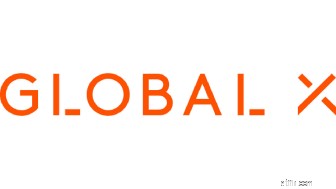
Preferred stocks aren’t among the most well-known corners of the market, but they’re well-trafficked by income hunters.
Preferred stocks are often referred to as stock-bond “hybrids” because they feature characteristics of both common shares and corporate debt. For instance, they trade on an exchange like a stock, but they pay out a fixed dividend similar to a bond coupon. They also tend to trade around a “par value” like a bond. Because of the lack of price potential, as well as the fact that they typically don’t come with voting rights, companies must offer large yields on preferreds, often between 5% and 7%.
The Global X U.S. Preferred ETF (PFFD, $24.20) was launched in September 2017 as the cheapest preferred-stock ETF at the time, and so far, it has maintained that distinction. This fund holds more than 220 preferred stocks from companies such as mega-bank Wells Fargo (WFC), med-tech company Becton Dickinson (BDX) and communications infrastructure REIT Crown Castle (CCI).
And like many preferred-stock index funds, PFFD delivers a generous yield. Presently, its SEC yield is 5.7%.
Learn more about PFFD at the Global X provider site.
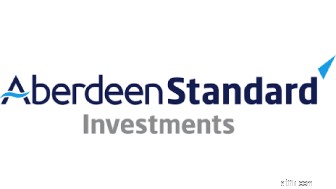
Traditional gold ETFs technically aren’t index funds because they don’t track an index. However, they're still “passive” investments (like index funds) that are designed to simply reflect price changes in gold.
While ETF providers have been undercutting each other for many years now, gold ETFs have been mostly immune until relatively recently. However, in 2017, Will Rhind’s GraniteShares disrupted the industry with a low-cost gold ETF, the GraniteShares Gold Trust (BAR).
BAR’s low fees appeared to force the hands of several other fund companies. For instance, SPDR, provider of the ubiquitous SPDR Gold Shares (GLD), eventually responded with a low-cost product called the SPDR Gold MiniShares (GLDM).
The GraniteShares Gold Trust lowered its fees yet again, to 0.1749%, in October 2018. However, the Aberdeen Standard Physical Swiss Gold Shares ETF (SGOL, $124.48), which has been around since 2009, dropped its expenses to 0.17% in December 2018 to claim the title of lowest-fee gold ETF.
Aberdeen’s fund is like many other physical gold ETFs in that it aims to track the price of gold bullion. SGOL holds its physical metal in a secured vault in Zurich, Switzerland – hence the name.
Learn more about SGOL at the Aberdeen Standard provider site.